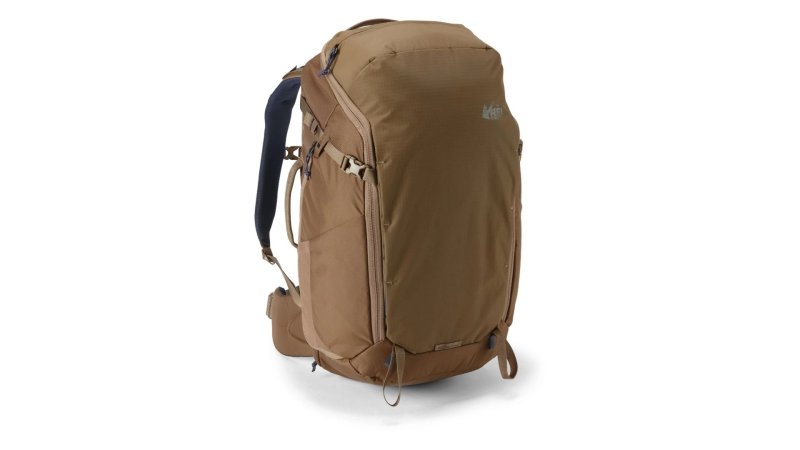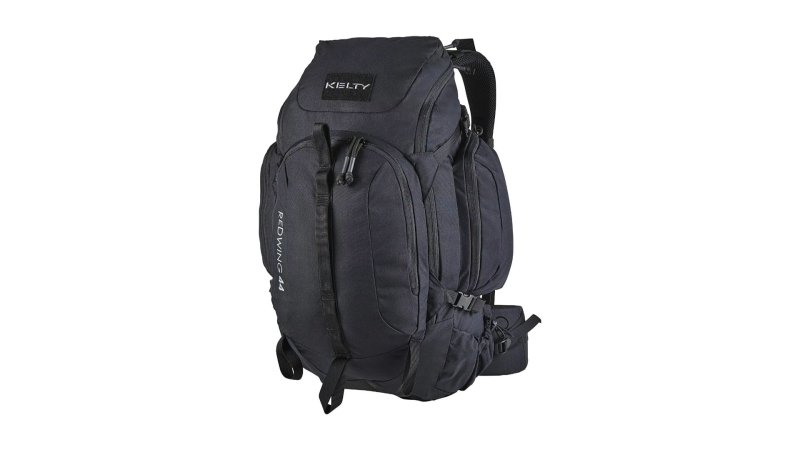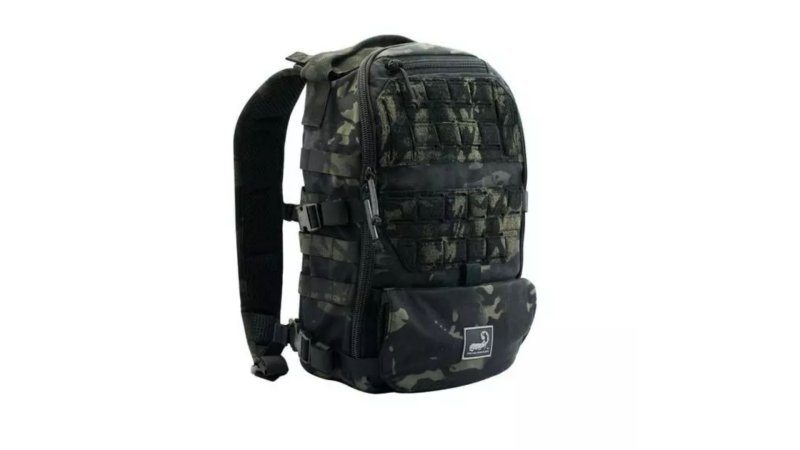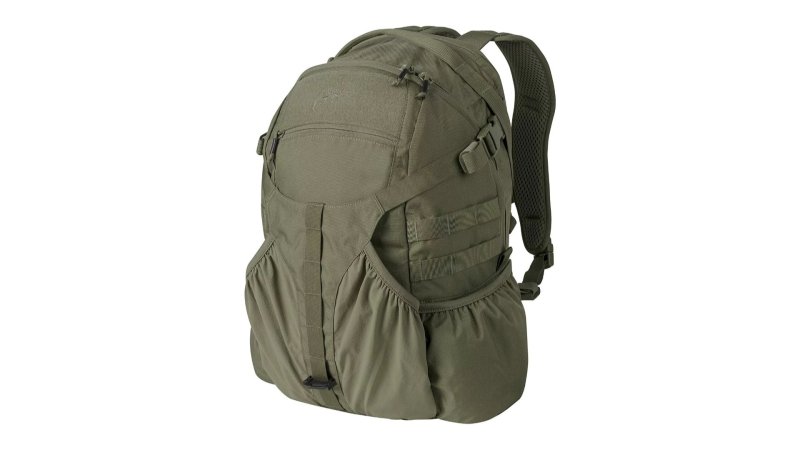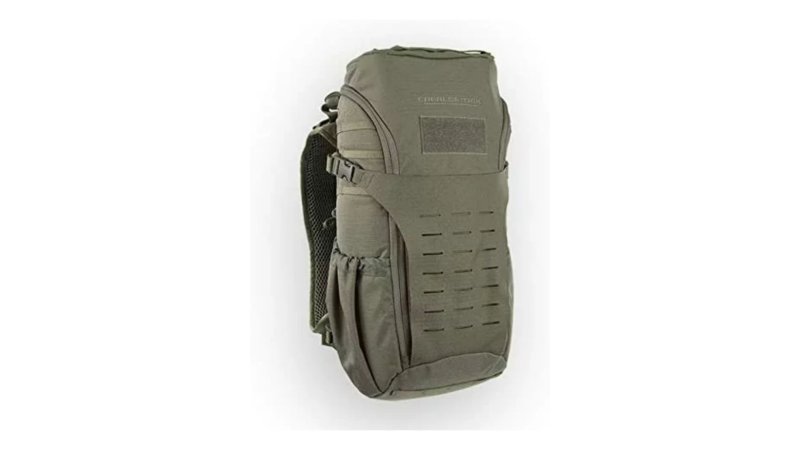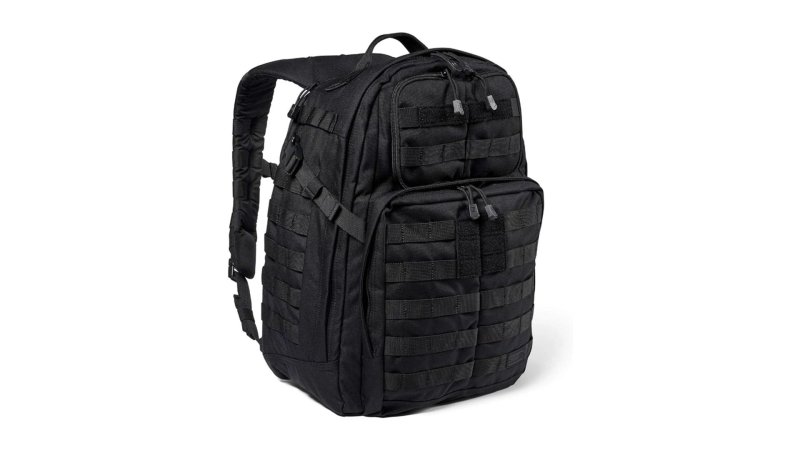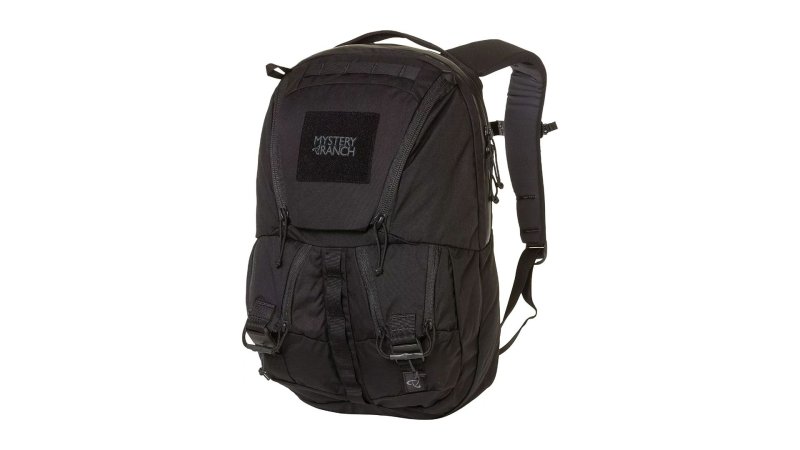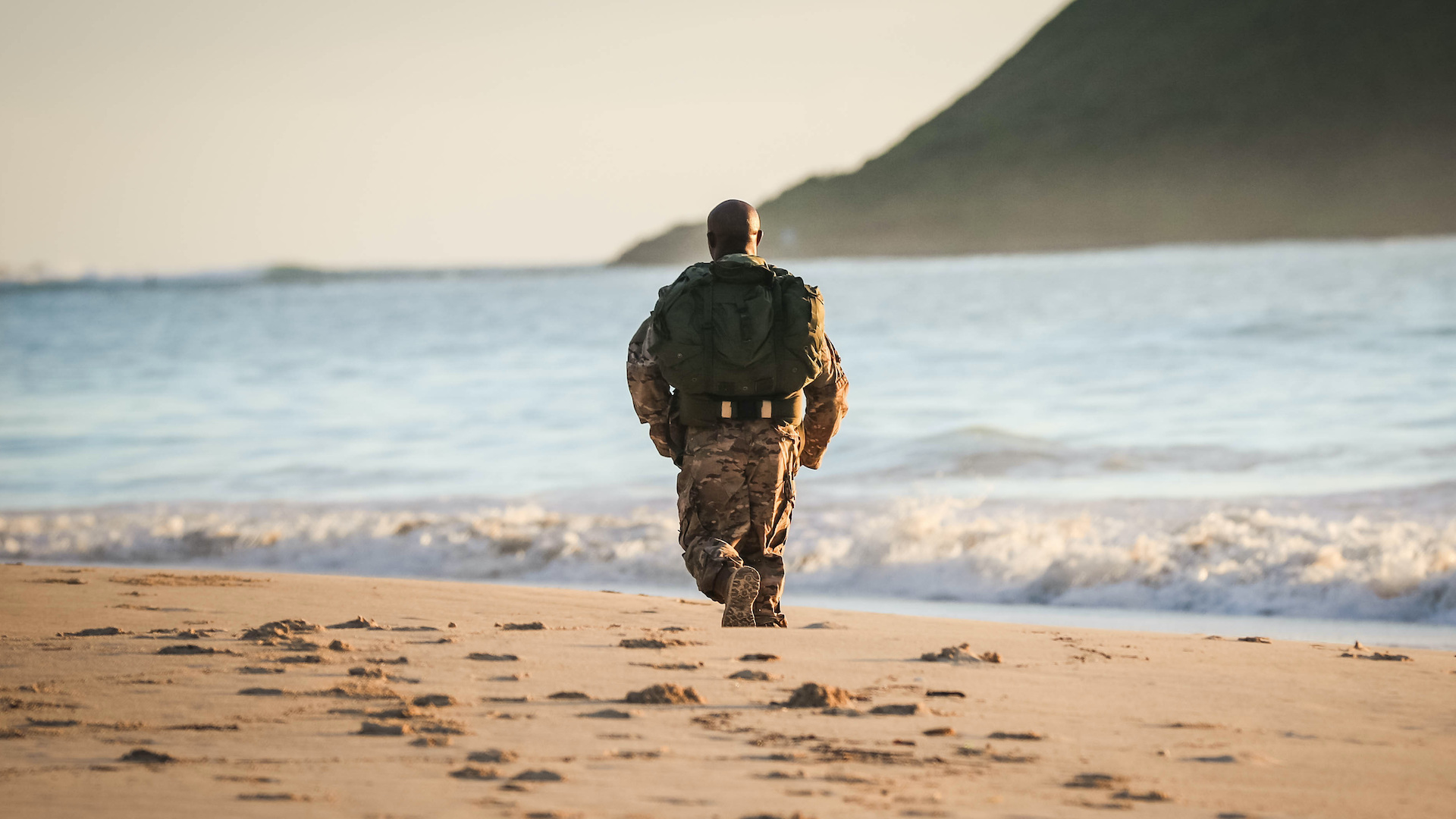

We may earn revenue from the products available on this page and participate in affiliate programs.
When you hear “rucking backpack,” you might think of some hard-charging GI trudging through the jungle. But for those who aren’t familiar with this old Army jargon, rucking simply means to get from point A to B as steadily and quickly as possible, all the while still being able to continue the mission or face whatever obstacle could be in your way. Today, we are going to talk about the best rucking backpacks on the market to help you do just that.
Yes, we know that rucking and hiking are almost the same thing. The difference, however, is that rucking implies that some haste is needed. With that, these were chosen with the idea that you had to be somewhere quick, fast, and in a hurry, whether it be a brisk walk with your computer and books for school; or you just realized you’re about to miss your flight and now have to skedaddle across the airport.
To that end, we here at Task & Purpose have compiled a no-nonsense and specifically scrutinized list to help you find the right choice out of the best rucking backpacks on the market. Take a gander and find the choice that’s right for you.
- Best Overall: REI Co-op Ruckpack 40
- Best Value: Kelty Redwing 30L Tactical Backpack
- Editor’s Choice: AMAP III Assault Pack
- Best All-Around: Helikon-Tex Urban Line Raider Tactical Backpack
- Best High-End: GoRuck GR1
- Best Military Day Pack: Eberlestock Bandit Pack
- Best Tactical: 5.11 Rush 24 2.0
- Best Urban: Mystery Ranch Rip-Ruck 24
How we tested

We loaded the packs to their max and walked. Each pack had no less than 12 miles of rucking on them. The average pace was no less than four miles per hour to test comfort and ventilation. The terrain was hilly state parks and national forests. Each pack got the hose to simulate heavy rain, stressing any of the manufacturer’s water-resistant applications.
All of these products were carried as a daily backpack for a total of seven days. The daily carry consisted of survival gear into thick woods, and from vehicle to workplace in multiple settings from office to military environments. Some variations of the test occurred, such as rocking a concealed carry weapon or computer, or both. And lastly, all of them were used as a range bag with one or two guns, hearing and eye protection, a cleaning kit, water bottle, snacks, and about 200 rounds of ammunition for a day of pew pew. Needless to say, we got our rucking in for the last few months.
All of the backpacks recommended in this review were hands-on field-tested by your trusty crew of Task & Purpose gear reviewers. We take care to find the best of the best and at affordable prices, too. Not to mention, we also dig into our peers’ reviews and recommendations to maintain a good neutral bias until the verdict is met. Although we rated these, we always keep a lookout for other interesting products and list them as honorable mentions. For further information on our product review methodology, please check here.
Best Overall
REI Co-op Ruckpack 40
Pros
- Durable ripstop recycled materials
- Water-resistant with a rain cover
- Internal spring steel frame
- Convertible design for ease of travel
Cons
- Small, cheap buckles
- No strap keepers
Product Specs
- Capacity: 40 liters
- Dimensions: 25 x 14.5 x 9 inches
- Weight: 2 pounds 13.5 ounces
- Colors: Black or Terra Firma
Best Value
Kelty Redwing 30L Tactical Backpack
Pros
- Cheapest of the tested packs
- Many options for securing tools and equipment
Cons
- Lacks a rain cover
- Lacks strap keepers
Product Specs
- Capacity: 30 liters
- Dimensions: 22 x 11 x 12 inches
- Weight: 2 pounds 12 ounces
Editors Choice
AMAP III Assault Pack
Pros
- Loads of accessories and space to strap them to
- Fairly priced
- Comfortable and capable of mating to your favorite plate carrier
Cons
- Can feel like you have a giant ball on your back
- The removable straps are held in by fabric and plastic
Product Specs
- Capacity: 14+ 8 liters
- Dimensions: 15.7 x 11 x 7.8 inches
- Weight: 2 pounds 3 ounces
Best All-Around
Helikon-Tex Urban Line Raider Tactical Backpack
Pros
- Beaver tail
- Fairly priced
- Concealable waist belt
Cons
- Feels bulky and rigid
- Zipper to the main compartment can take some getting used to
Product Specs
- Capacity: 20 liters
- Dimensions: 18.5 x 12.2 x 5.91 inches
- Weight: 3 pounds 5 ounces
Best High-End
GoRuck GR1
Pros
- Extremely high-quality materials
- Almost completely waterproof
- The laptop sleeve is well-padded
- Made in the USA
Cons
- Expensive compared to similar products on the market
- No built-in water bottle pouches
Product Specs
- Capacity: 26 liters
- Dimensions: 12 x 20 x 6.75 inches
- Weight: 3 pounds 4 ounces
Best Military Day Pack
Eberlestock Bandit Pack
Pros
- Full-zipper access to the main compartment
- Perfect for a day ruck/hike to your favorite locations
- Multiple color options to suit your wants and needs
Cons
- Small capacity for the price
- No rain cover
Product Specs
- Capacity: 13.6 liters
- Dimensions: 16.25 x 7 x 6.5 inches
- Weight: 2 pounds 8 ounces
Best Tactical
5.11 Rush 24 2.0
Pros
- A classic with a few upgrades
- Fairly priced
- Jam-packed with a ton of features to include a CCW compartment
Cons
- The shoulder straps work better with a plate carrier
- Overtly tacticool
Product Specs
- Capacity: 37 liters
- Dimensions: 20 x 12 x 8 inches
- Weight: 3 pounds 12 ounces
Best Urban
Mystery Ranch Rip-Ruck 24
Pros
- Innovative magnetic and zipper design
- Waterproofing material on the computer/tablet compartment
- Comfortable design with loads of features
Cons
- No outboard water pouches compared to the 32L version
- Not as versatile as similar products in size and price point
Product Specs
- Capacity: 24 liters
- Dimensions: 18.5 x 12 x 10 inches
- Weight: 2 pounds 6 ounces
Our verdict on the best rucking backpacks
At the end of the day, it’s what’s most comfortable to you. Any of these packs listed are purpose-designed for a shorter trip, so pick the one that works best for you. We took our time in reviewing and putting these products to the test, ensuring that you may have another detailed experience before you decide to buy that pack you’ve been wanting for a while now.
We choose these particular models based on the idea that they can be used for everyday life or training. Not all of these would work in a military setting, and some of these would be very tacticool in an everyday civilian setting. Overall, we landed with a good mix of well-designed packs for our top picks, and each one carried the weight well while putting miles on them. The REI Co-op Ruckpack 40 landed at an affordable price with many great features. The Kelty Redwing 30L Tactical Backpack was the Best Value for a multipurpose use, and rounding it out with the Editors Choice was the AMAP III Assault Pack – Agilite.
What to consider when buying rucking backpacks
Types of rucking backpacks
Framed
A backpack frame is a must if you plan to carry a heavy load (more than 45 pounds). Frames are designed to distribute weight more evenly, so it doesn’t all rest on your shoulders and lower back, and they’re often equipped with other features like ventilation. They’re typically made from lightweight material (aluminum or plastic), and come in different shapes (flat or contoured), which you’d pick based on your gear and preferences.
Frameless
If your rucking backpack doesn’t have a frame, you essentially have a normal backpack, so be cautious about the weight of your load-out. You could comfortably carry a load of less than 45 pounds with a frameless bag. If you go heavier than that, you risk straining your shoulders and back.
Key features of a rucking backpack
Quality materials
If you’re going to take rucking seriously and make it a routine, you will need quality materials. Anything over 500D Cordura will be sufficient. Waterproofing will add to the longevity of the pack as it begins to wear. Also, be sure to check vital stress points of the pack for heavy reinforced stitching, such as the shoulder straps, the zipper tracks, the waist belt (if it has one), and the frame (if it has one), and the construction of how it’s mounted or where it is inserted. Once you start getting into heavier weight and longer distances, this becomes particularly important. If the stress point and material are cheap, you won’t get much life out of your hard-earned cash.
Quality zippers
If you’ve ever pulled on a zipper and could just feel that it was going to tear apart, then don’t go with that one. Not only the material of the zipper, but the size and a good loop hole so you can replace the pulls are important, along with the sturdiness of the zipper tracks themselves which should be robust and strong. Some can be made of metal and others a type of polyurethane, which can make the difference of staying shut as you pick up a jog on your rucking adventure.
Strap keepers
This is where the saying “wired tight” comes to mind. Having straps flailing everywhere can be annoying, especially if your adventure takes you into the woods where everything is getting snagged on something.
Some strap keepers are made of elastic material, but these wear out over a short time. Others have hook-and-loop-style keepers that are sewn into the ends of the straps. We recommend those, as they typically last longer and are easily replaced if you’re good with a needle or have an awesome sewing shop near you.
Pricing considerations for rucking backpacks
We focused on the mid-range up to the high-end as far as rucking backpacks are concerned. Typically, you find the low-end at up to $90, mid-range from $90 to $200. High-end models are anywhere from $200 to $350. The no-nonsense platinum range is anything over that, while some of the models out there can easily shoot up into the $900 range, which you see in the military realm where the quality of gear makes all the difference in a tactical environment.
FAQs about rucking backpacks
You’ve got questions. Task & Purpose has answers!
Q: Do you need a special backpack for rucking?
A: Not at all. You choose what works best for you when rucking.
Q: Does rucking build back muscle?
A: Yes, and shoulder muscle as well.
Q: How much weight can you ruck with?
A: Depending on the quality of the pack and type of frame, your ability to carry and move with the weight, you may find your answer. In the military, it is typical to carry anywhere from 55 to 80 pounds of gear depending on the mission or training outcome.
Q: What should I look for in a ruck pack?
A: Look for high-quality material that can withstand stress, weight, and wear, along with reinforced stitching and heavily padded shoulder straps. A waist belt and compression straps are important, not to mention a frame (internal or otherwise) that can help immensely in carrying heavy loads without hurting your back.
Q: What’s the difference between a rucksack and backpack?
A: Rucksacks are typically designed for heavier loads with the hiker or military member in mind. Backpacks can come in a variety of shapes, sizes, and purposes.
Q: What rucksack does the military use?
A: Most of the Army use the modular lightweight load-carrying equipment MOLLE II packs. The Marine Corps uses a similar version called the Improved Load-Bearing Equipment, or ILBE.
Q: What are the benefits of rucking?
A: With a heavy load on your body and walking at a brisk pace, you pick up a cardio-like exercise. It helps build strength in your legs, back, and shoulders.
